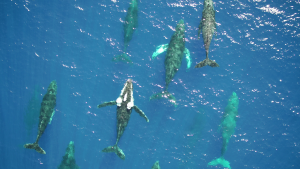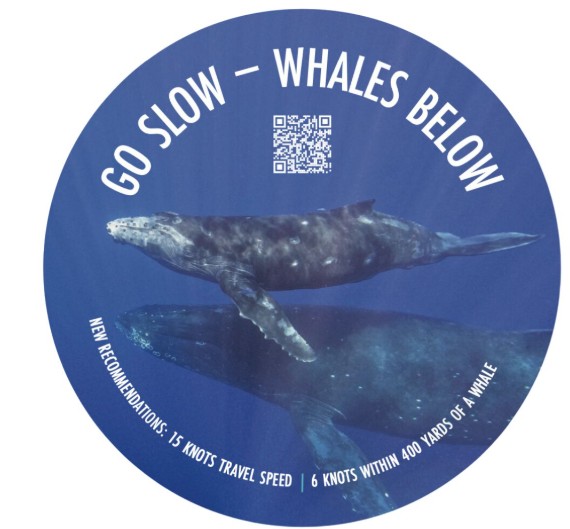Boating with Whales – What’s the Solution?
TO SUMMARIZE:
During whale season, November through April of the following year, especially in water depths of 100 fathoms or less, all boaters should post a lookout and maintain a recommended top speed of 15 knots or less to reduce collisions with whales.
Waters around the Hawaiian Island’s represent the principal breeding/calving grounds for the majority of the humpback whales in the North Pacific. As such it is a very important place and time for these animals. While we enjoy the same waters, and in some case the animals themselves, we need to share those waters and do our part to ensure their protection. One of the top threats to humpback whales is vessel collisions. By following these recommendations you can minimize the risk to the whales yourselves.
There are safe ways to get a closer look:
- If approaching a whale to observe it, do so at a suggested maximum speed of six knots within 400 yards,
- Do not approach any closer than 100 yards of any whale,
- When done observing the whale, leave the area as you entered, at a recommended speed of six knots or less until >400 yards away from the whale. Remember 15 knots or less is highly recommended while transiting elsewhere.
- According to a study on Frontiers it was found that limiting the amount of time spent observing the whales to 30 minutes or less will minimize the impact of multiple boats on the whales’ behavior and energy expenditure.

Things to consider:
- you never forget an encounter with a whale (positive or negative),
- your appreciation for these magnificent creatures can only grow,
- by being a prudent mariner and following these guidelines you will likely have more positive experiences with whales,
- following speed limits suggested in these web pages can prevent whale injuries and deaths,
- while these recommendations are based on best available science, they also represent prudent measures to make waters safer for whales and people sharing the waters around Hawaii with them,
- hitting a 40-ton whale is likely to cause damage to one’s vessel and/or injury and even fatalities to passengers and crew,
- following speed value guidance suggested in these web pages can also reduce whale harassment and injury.
BE PRUDENT, BE AWARE, GO SLOW AND LEAVE SPACE.
GIVE THE WHALES A PASS
You Can Help Protect Marine Species in Hawai`i
“Go Slow Whales Below” is a cooperative project between DLNR’s Division of Aquatic Resources and Division of Boating and Ocean recreation, NOAA’s Hawaiian Islands humpback Whale National Marine Sanctuary, and Pacific Whale Foundation. Our goal is to protect whales and mariners by reducing boat speeds in whale habitat (down to 600 feet depth) during whale season (November through April).
1. What TIME of Year?
2. What DEPTH?
3. What SPEED?
4. What DISTANCE?
5. What’s the SOLUTION?
Return to Boating with Whales start page
(LAST UPDATED 7/23/25.)
References:
Currie, J. J., Stack, S. H., & Kaufman, G. D. (2017). Modelling whale-vessel encounters: the role of speed in mitigating collisions with humpback whales (Megaptera novaeangliae). J. Cetacean Res. Manage., 17, 57-63.
Mobley, J. R., Bauer, G. B., & Herman, L. M. (1999). Changes over a ten-year interval in the distribution and relative abundance of humpback whales (Megaptera novaeangliae) wintering in Hawaiian waters. Aquatic Mammals, 25, 63-72.
Vanderlaan, A. S., & Taggart, C. T. (2007). Vessel collisions with whales: the probability of lethal injury based on vessel speed. Marine mammal science, 23(1), 144-156.

